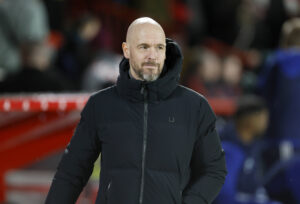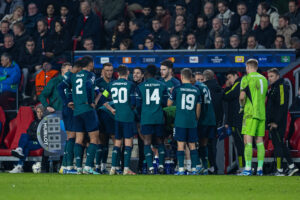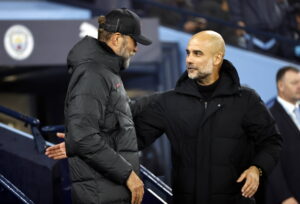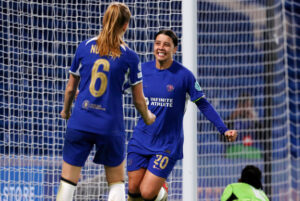Welcome back to the new series of articles from Last Word on Football. This series looks at the grounds that are sadly no longer with us. Today we look at a ground that hosted games for 77 years and gave us countless classic matches and many more memories. The original Wembley Stadium was the home of England, cup finals and many other occasions. It was a special ground, with many fans knowing if they were on their way to Wembley, they were off to a huge game.
Never to Be Forgotten Football Grounds: The Original Wembley Stadium
Opening
Wembley Stadium was built between 1922 and 1923 in just 300 days at a cost of £750,000. At this time the stadium was known as the British Empire Exhibition Stadium or the Empire Stadium due to it being the centrepiece of a British Empire Exhibition at the end of the First World War. Described as the best sporting arena in the world, the official capacity was a huge 127,000. The stadium would become world-renowned as the home of not just English football, but football itself.
Wembley was not officially opened until a year after its completion; however, just days after it was built, the ground played host to its first FA Cup Final. The game featured Bolton Wanderers and West Bromwich Albion and famously became known as the ‘White Horse Final’. More than 200,000 supporters attempted to get into the ground and a mounted policeman on a white horse named Billy helped keep fans away from the pitch.
The stadium was officially opened on April 24th 1924 by King George V.
Iconic Twin Towers and the 39 Steps
Wembley itself is a world-famous stadium but two features were incorporated that would become iconic. The twin towers could be seen from miles around and would become a symbol of Wembley throughout its history. Standing 126 feet tall, the towers were originally only meant to be a temporary feature. However, they quickly became a feature of the local area and demolition plans were scaped. Many who had the privilege of walking down Wembley Way would be in awe of the imposing towers in front of them. The towers were the last part of the ground to be demolished despite objections and plans for them to be incorporated in the new stadium.
The famous 39 steps leading to the royal box are known throughout world football. Iconic images of players and teams lifting the FA Cup, League Cup and World Cup, amongst others are replayed on a regular basis. From famous captains such as Bobby Moore lifting the World Cup for England in 1966, to shock FA Cup winners such as Wimbledon after defeating Liverpool. Or Sunderland defeating the then mighty Leeds United, fans will always remember teams walking up the famous steps to collect a trophy from the royal box.
Early Days
Wembley stadium held many events over the years, sporting and otherwise. Alongside football; rugby, speedway and greyhound racing were regular events to be held at the stadium, attracting thousands. However, it is football that it is best known for. It would hold every FA Cup Final until the time it was demolished. Early cup finals would attract attendances of over 90,000. During this time, pre World War Two, improvements were made. Better terracing was installed and almost half of the capacity of 100,000 would be seated.
Further improvements would be made as time passed. Floodlights were installed in 1955 and in 1963 a new roof was installed to cover all spectators. The stadium became all-seater in 1990, reducing the capacity to 80,000.
Wembley Stadium: England’s Home
The England national team did not take up a permanent residency at Wembley until the 1950s. Only games against rivals Scotland had the privilege of playing at Wembley prior to this. However, it soon became home to the England team with Wembley being associated with the national team as much as the three lions or their famous white shirts. England would continue to play their games here until 2000. They played Germany in the last ever game at the stadium, losing 1-0.
The first national side to play England at Wembley would be Argentina in 1951. The home side won 2-1. 15 short years later, the two would meet again at the same venue in a bad-tempered World Cup quarter-final.
1966 World Cup
One of the greatest times to be an England supporter and to visit Wembley was during the summer of 1966. England were the first English speaking country to host the World Cup and it would become a tournament that would forever be talked about. Eight stadiums across England hosted games; however, Wembley was the main arena.
Wembley played host to nine games during the tournament. Including all six of England’s games, including the final and the third-placed playoff. The Three Lions would win all but one of their games before lifting the famous Jules Rimet Trophy. A Geoff Hirst hattrick in the final against West Germany helped the tournament hosts win the game 4-2 after extra time and lift their first and only World Cup.
Classic Games at Wembley Stadium
The original Wembley Stadium played host to many classic games in its 77-year history. Here is a look back at just some of them.
1953: The Matthews Final
The 1953 FA Cup Final will forever be known as the “Matthews Final”. The great Stanley Matthews was attempting to win the FA Cup at the third time of trying. At 38-years-old, this would be his last chance. His Blackpool team faced Bolton Wanderers in what would be a classic. Blackpool trailed Bolton 3-1 with 22 minutes to go; however, Matthews and his teammates were not to be denied. Matthews inspired his team to a remarkable comeback, his assist in the 92nd minute for Blackpool’s fourth goal gave his team the victory and his first cup winners medal.
1966: World Cup Final
Almost 97,000 and a British television audience of over 32 million witnessed a historic event. West Germany took a 12th-minute lead only for Geoff Hurst to cancel this out six minutes later with his first of the game. Another goal each in the second half sent the game into extra time.
England surged forward in the first half of extra time and got their reward. Hurst got his second after his shot hit the underside of the crossbar and bounced away. With the referee unsure if the ball had crossed the line, it was down to the linesman who indicated that it was a goal. It is a goal that is still argued about today.
Hurst completed his hat-trick in the last minute with a thunderous shot. The goal and its build-up came with the famous line from commentator Kenneth Wolstenholme:
“And here comes Hurst. He’s got… some people are on the pitch, they think it’s all over. It is now!
1968: European Cup Final
Manchester United, under the guidance of the great Matt Busby, became the first English side to lift the European Cup. The Red Devils triumphed over Portuguese giants Benfica on a great night at Wembley. A capacity crowd of 100,000 saw Bobby Charlton give United a first-half lead. This was cancelled out by a second-half equaliser and Portugal great Eusebio should have won it for his side as the 90 minutes drew to a close.
Eusebio’s miss spurred on United in extra time. George Best put his side in front with Brian Kidd extending United’s advantage. Charlton scored his second of the game to complete a 4-1 victory.
1981: FA Cup Final Replay
A 1-1 draw in the first game, saw both Tottenham and Manchester City attack in a thriller under the lights. Two goals in the first 10 minutes saw the game tied once more at 1-1 as both teams attacked each other almost relentlessly. Two further second-half goals made it 2-2 as the teams could not be separated.
The first 90 minutes of the replay which had thrilled fans was merely the set up for one of the greatest winning goals in a cup final. Argentinian Ricky Villa produced a moment of magic to win the game for Spurs. Collecting the ball on the edge of the area, Villa weaved his way through the City defence before sliding the ball past the advancing City goalkeeper.
1998: Championship PlayOff Final
In what is regarded by many as the greatest play-off final ever, Sunderland and Charlton served up a classic in front of almost 78,000. Both teams finished the season close to gaining automatic promotion. The Black Cats finished on 90 points finishing third, while the Addicks finished fourth on 88 points. Sunderland, backed by the whole of Wearside and the majority in the stadium, had a disappointing first half to the game with Charlton leading 1-0 at halftime. Sunderland born Clive Mendonca with the goal.
The second half, however, was a dramatic improvement with no one able to predict what was to come. Sunderland dominated the early stages of the second half and within 13 minutes they were in front. Niall Quinn equalised on 50 minutes then top scorer Kevin Phillips had the old ground shaking as he put Sunderland in front.
With less than 20 minutes remaining Mendonca scored again. A minute later, Niall Quinn scored his second. With time running out, Charlton once again equalised. Nine minutes into extra time, Sunderland were once again leading. Nicky Summerbee scoring the Black Cats’ fourth. The Addicks got their fourth of the afternoon and Mendonca his third to send the game into a penalty shootout. Charlton went on to win 7-6 on penalties.
Other Sporting Events and Concerts
Wembley was not just a great football stadium. Concerts also wowed fans. Global acts such as The Rolling Stones, Madonna, Oasis, U2 and the epic Live Aid amongst many others have played in front of thousands. Boxing fans have also been treated to some great bouts, as have wrestling fans when the WWF came to Wembley with Summerslam.
The 1948 Olympics held in London had Wembley as its centrepiece. It hosted the opening and closing ceremonies as well as many track and field events and finals.
American football have held games at the stadium as have Gaelic football. In 1975, in front of 90,000 fans, daredevil Evil Kinevil attempted to jump 13 buses.
A Special Stadium With a Hallowed Turf
As a football fan, if you were going to Wembley, it usually meant one thing. Your team was in the final. Many in the game called the pitch at Wembley ‘Hallowed Turf. This came from when the FA Cup Final was the last game of the season and seen by many as the most important game. For many footballers, to play on the hallowed turf was their ambition as it usually meant they would be playing in the most important game of their life.
Decline
During the 1990s, although still iconic, Wembley was not the stadium it once was. Facilities were outdated and with little manoeuvre for improvement, the decision to build a new national stadium was announced. Instead of relocating, the new stadium would be built on the same site. Sadly the twin towers could not be saved; however, foundations of the new Wembley include rubble from the towers.
The End of Wembley Stadium
The final events to be held at the famous stadium were in 2000. The last FA Cup Final was played on May 20th, the last concert on the 20th August and the last football match on the 7th October. Demolition began in 2002 and was completed in 2003.
Main Photo






